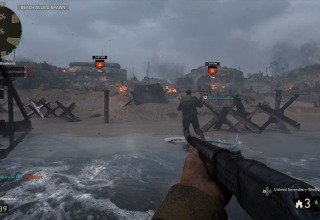When it comes to World War II games, weapons usually get all the attention. Players obsess over rifles, pistols, and grenades, but there’s another element that often defines the experience: vehicles. From Sherman tanks crawling through mud to Spitfires soaring across the skies, war machines are more than just tools of destruction—they’re a vital piece of immersion that transports players straight into the 1940s.
The authenticity of these vehicles doesn’t just add realism—it transforms gameplay. The roar of an engine, the clunky mechanics of a half-track, or the nerve-racking process of piloting a bomber over enemy territory all combine to make the virtual battlefield feel alive. This is why many World War 2 games dedicate painstaking detail to recreating the look, feel, and even the sound of tanks, planes, and ships.
Tanks as the Backbone of the Battlefield
Nothing screams WWII quite like the image of a tank rolling across contested ground. Titles such as Company of Heroes or Hell Let Loose showcase how tanks can change the flow of combat, acting as both a terrifying threat and a rallying point for troops. Authenticity matters here—players expect the Panzer IV to feel like a Panzer IV, not just a reskinned modern vehicle.
Developers dive deep into historical research, ensuring that armor thickness, speed, and firing power are represented accurately. This isn’t just for history buffs—it also makes encounters feel tense and believable. When you’re trying to flank a Tiger tank with infantry, knowing its weak points feels less like game logic and more like applying real battlefield knowledge.
Skies Full of Drama
While tanks dominate the ground war, aircraft bring WWII games to new heights—literally. Dogfighting in titles like IL-2 Sturmovik or hopping into a mission in Call of Duty: WWII captures the adrenaline of air combat. Planes aren’t just background props; they’re fully realized machines that add layers of strategy.
The difference between piloting a nimble Spitfire and a heavy B-17 bomber isn’t just cosmetic—it changes the entire pace of the game. Attention to detail, from cockpit instruments to engine stalls, ensures that players feel the pressure of split-second decisions at 20,000 feet.
Naval Power and Overlooked Giants
Though often less spotlighted, naval battles play a crucial role in World War II’s story. Games like World of Warships prove that destroyers, cruisers, and aircraft carriers can be just as thrilling as tanks and planes. The sense of scale in these naval encounters—massive ships trading fire across miles of ocean—highlights just how monumental the machinery of war truly was.
Including these sea giants doesn’t just broaden gameplay variety—it deepens immersion. WWII wasn’t fought in one arena, and neither should the games that represent it.
Why Vehicles Make It Real
Vehicles in WWII games do more than provide flashy set pieces. They embody the industrial might of nations, the strategies of generals, and the lived experiences of soldiers. When players hop into a jeep to transport troops or man the gun of a tank turret, they’re engaging with history in an interactive way textbooks simply can’t provide.
Authentic war machines remind us that technology shaped the war just as much as human courage. Without them, WWII games would feel incomplete—missing the mechanical heartbeat that defined an era.
The Engines of Immersion
From tanks tearing through villages to planes dueling in the skies and ships clashing across oceans, authentic vehicles are the engines that drive immersion in World War II games. They don’t just add variety—they anchor the player in a world where every bolt and engine roar feels historically grounded.
For those eager to experience the weight, scale, and strategy that these war machines bring to gaming, digital marketplaces like Eneba offer an ever-expanding library of titles that put you in the driver’s seat of history.






















